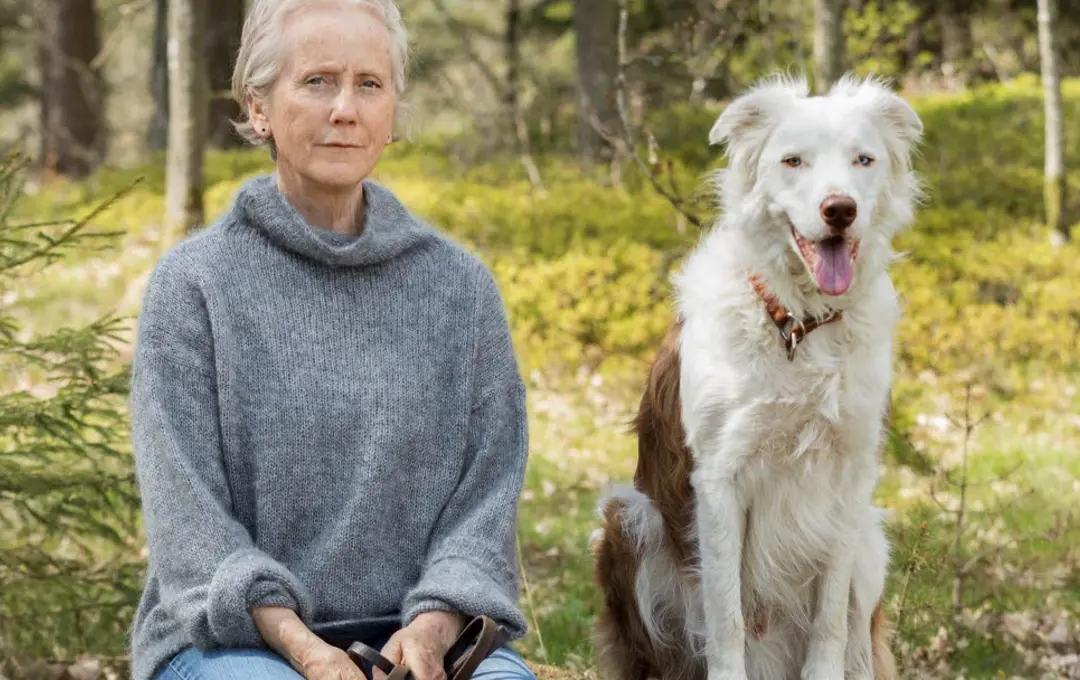"I get inspiration from everything that comes into my life"
When did Eva Lindström know that she wanted to be a writer and illustrator of picture books? What was she like as a child and does she always have a book going in her head? Read our interview with the 2022 laureate.
 Photo: Susanne Kronholm
Photo: Susanne KronholmWhen did you know that you wanted to be a writer and illustrator of picture books?
– I probably knew by the early or mid-1980s, after I had done my first book. I started my career drawing comic strips for Swedish magazines, Kvinnotidningen Q and Arbetaren. But then I switched to picture books. Picture books let me make bigger pictures and work in colour, but the texts were still supposed to be short. It was a good fit for me.
What were you like as a child?
– I wanted to have things my way.
Tell us about your creative process. Do you plan the story before you start to draw, or are you surprised by what comes out of your brush?
– I don’t plan anything; I just sit down and start to draw or write. Sometimes I’m sketching and drawing at the same time. Sometimes I write the words first and only then do I start working on the illustrations. Then, when I paint the pictures, I almost always have to change the words. The pictures take over and make certain words completely superfluous.
What is humour to you? Do you see yourself as funny?
– That’s a hard question to answer. Maybe humour is when something odd or unusual sneaks into a normal, everyday setting. It could be a particular look or a word that is incongruous and lends new meaning to everything else. Sometimes I think that I’m fun, that I can surprise myself.
Where do you get your inspiration?
– I get inspiration from everything that comes into my life. Pictures, movies, books. Friends, animals, landscapes with beautiful trees or unusual rocks or mountains.
Changes and journeys are recurring themes in your books. Why are those themes so interesting for you?
– I have to say I’ve never really noticed that. It’s probably the experience of not recognising yourself, of being lost in an unfamiliar world, that triggers something in me.
Do you read a lot?
– I’m always reading, but I read slowly. Right now, I’m reading a novel by Knausgård, The Morning Star. I have a lot of strong reading memories in my head, but they exist as feelings or moods, never as a clear image of what the book in question was about.
Do you always have a book going in your head?
– Yes, I guess there’s always something going on in there that might be worth trying to work with one day.
What do you do if you get writer’s block?
– I might write about something completely different that doesn’t block me.
Which is harder: writing and illustrating books yourself, or illustrating for other writers?
– It’s harder to illustrate for someone else. Sometimes I get a little tense, and that affects the pictures; they start to get tense, too. Then I really have to make an effort to relax. And that is almost impossible.
Why is children’s literature important, do you think?
– It’s important for everyone – not just adults – to be able to access worlds we might never encounter any other way, to be exposed to ideas that make life seem bigger, ideas that stimulate our imaginations.
What kind of book would you never illustrate?
– A book that doesn’t say anything serious to me. A book that I feel like I’ve seen or read before.

Portrays moods and emotions
Eva Lindström is a Swedish picture book artist. She has published some 35 solo titles and has illustrated many books by other authors. Her work has been honored with multiple awards. She writes stories that shift between the everyday and the existential, combining shrewd humour with absurd mystery.
Discover Eva Lindström